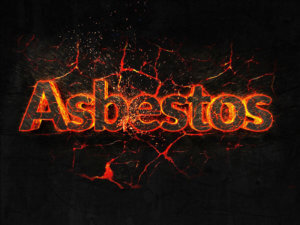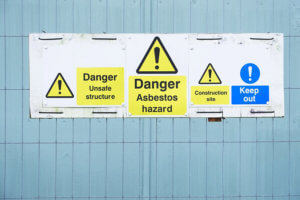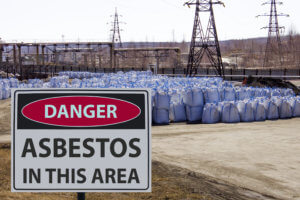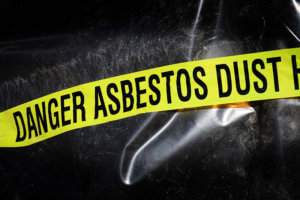Although asbestos disease has been a blight on the lives of workers all over the world for well over 100 years, it remains an illness that is shrouded in mystery.
Why are we still talking about asbestos, when it was banned many years ago? Why is historic exposure to asbestos still causing asbestos disease? Can you claim for asbestos disease compensation even if it was caused many years ago?
Mooneerams asbestos disease solicitors, have put together a guide containing some of the questions that we are frequently asked about; asbestos, the different asbestos illnesses and making asbestos disease compensation claims.
We also provide brief answers to those questions.
If after reading through it you find our Asbestos Claims Legal Guide hasn’t answered your own asbestos related query, simply call us on 029 2048 3615 and we will be more than pleased to help you.
What is asbestos?
Asbestos is the name for a fibrous group of minerals. The flexible fibres that make up asbestos, are heat resistant. Since asbestos is fire resistant and has excellent insulating properties, it can be used for a whole range of different purposes. It has been widely used as a building material, up until the date it was banned in the UK. Asbestos is still used in some countries, including the USA.
What are the most commonly used types of asbestos?
Crocidolite – also known as ‘Blue Asbestos’.
It is hugely toxic.
Its fibres resemble needles, and this is what makes them so dangerous. When they are inhaled, they cause great damage to the lungs. Blue asbestos was mainly used in a spray-on format.
Amosite – also known as ‘brown asbestos’. Another highly dangerous form of asbestos.
Chrysotile – also known as ‘White Asbestos’. It was the most commonly used form of asbestos, certainly in the UK.
It was widely used in all types of industry and commerce. One of the main uses to which it was put, was in asbestos based cement.
Although less dangerous than crocidolite and amosite, with soft fine fibres, it would be wrong to think of it as a safe form of asbestos. It is responsible for millions of deaths from asbestos disease, worldwide.
What were the main uses for asbestos?
Asbestos material and products were used in the UK for all sorts of different purposes, including;
- Boiler insulation
- Brake pads and shoes
- Pipe lagging
- Fire protection
- Cement products
- Asbestos woven textiles
- Ceiling tiles
- Industrial gaskets
- Fireproofing & fireproof clothing
- Floor tiles
- Roofing
- Fire doors
- The marine industry
- Caulking – the material and process used to sealing joints
- Structural steel
- Insulation boards
In which industries was asbestos used in the UK?
It’s impossible to set out every type of industry where asbestos was regularly used, but here are some of the main ones:
- Railway engineering works
- Steel works
- Docks
- Shipbuilding
- Power plants
- Heavy industry
- Motor vehicle repairs
- Fire fighting
- Construction
- Mining
- Armed forces
- Carpentry
- Plumbing
- Boiler making
- Electrical wiring and installation
When was asbestos banned in the UK?
In 1985, amosite (brown asbestos) and crocidolite (blue asbestos) were banned from being imported and used. In 1999, the use and import of chrysotile (white asbestos), was prohibited. The final ban made the manufacture and supply of all asbestos based products illegal.
Why was asbestos banned?
People were dying from asbestos exposure, in large numbers. There is a long time lag between being exposed to asbestos and symptoms presenting themselves – and we mean a long time lag (known as the latency period). It can be anything between 10 and 60 years from exposure to symptoms appearing. Most cases of asbestos disease do not appear until at least 20 years from exposure.
Deaths from asbestosis started to peak in the 1980s, from mesothelioma, during the 1990s onwards. The dangers of asbestos were known about much earlier than that though. There was undoubtedly a will among business owners for asbestos to be used as long as possible. It was a cheap, flexible material as is evidenced from the wide range of industries in which it was used.
On the other hand, come the early 1980s, not only were the dangers of asbestos known, but asbestos disease was also killing a lot of people. As a result of these competing interests – business vs workers health – getting asbestos banned, was not an overnight occurrence.
How is asbestos disease caused?
Asbestos disease is caused by inhaling the dust or fibres given off by asbestos when it is worked on. When asbestos is cut, torn, sawn or otherwise worked with, asbestos fibres are released into the air.
As asbestos was worked on to make it suitable for the particular job in hand, those who worked with asbestos and others who carried on their own jobs nearby were subjected to being surrounded by constant clouds of asbestos dust.
When asbestos fibres are inhaled, they lie on the lungs. The more that a person is exposed to asbestos, the larger the amounts of asbestos that are inhaled and the greater the effects will be on the person’s health. Over time these fibres damage the lining of the lungs and further on down the years, this is what leads to asbestos disease being diagnosed.
Were workers provided with safety equipment?
The simple answer is that ‘no’ they weren’t. Alternatively, if they were provided with masks, they proved totally unsuitable. However, in the case of almost all the asbestos claims Mooneerams asbestos disease solicitor partners have dealt with, the evidence is that those who were exposed to asbestos were not provided with any type of protection at all.
What are the main types of asbestos disease?
There are four main types of asbestos disease:
What about pleural plaques?
Pleural plaques are another type of asbestos condition.
These are lesions of scar tissue on the lining of the rib cage and are caused by asbestos exposure. They tend to appear between five and thirty years after exposure.
They do not usually cause lung impairment or inconvenience. Neither does their presence mean that a person with pleural plaques will go on to suffer from one of the asbestos illnesses.
It is no longer possible to claim compensation for pleural plaques in England and Wales (although it is in Scotland).
I worked with asbestos. What are the symptoms of asbestos disease that I need to look out for?
The following list covers most of the symptoms of asbestos. Not all asbestos sufferers have all these symptoms:
- Developing a dry cough that becomes persistent
- Wheezing
- Becoming short of breath
- A pain in the chest or shoulders
- Extreme tiredness
- Loss of appetite/weight loss
- Chest tightness
- Clubbing (thickening) of the fingers and toes
What should I do if I develop any of the symptoms of asbestos disease?
The symptoms described above are fairly generic. They could be symptoms of a number of ailments, many that are far less serious in nature than asbestos disease. For that reason, it’s easy to dismiss them as being fairly trivial and to try to, ‘ride them out’.
If you or a loved one worked with asbestos or worked in the vicinity of others who did, you are likely to have inhaled asbestos dust or fibres.
Depending on the type of work you did and the duration that you worked with or near to asbestos, then should any of the aforementioned symptoms present themselves to you, it would be advisable to visit your GP to get checked over.
Tell your GP that you worked with asbestos and that you may have been exposed to it.
If the GP thinks that further tests may be necessary to establish whether you may have an asbestos illness, then you will be referred on, to visit a consultant to undergo a CT scan.
Is it true that some of the wives of asbestos workers got mesothelioma from washing their husband’s work clothes?
Yes, it is, and it wasn’t just wives who got asbestos disease from, what is known as, secondary exposure to asbestos. Some children who gave their fathers a hug every night after Dad returned home from work, still clad in overalls caked in asbestos dust, also went on to get asbestos disease.
Wives of some asbestos workers were exposed to asbestos as a result of washing their husbands’ overalls by hand. It is a macabre quirk of fate that the only form of asbestos disease that can be got in this manner, is mesothelioma. Mesothelioma is incurable. Mesothelioma sufferers tend to have a life expectancy of between 12 and 24 months.
Can I claim asbestos disease compensation all these years after I was exposed to asbestos?
Asbestos disease claims are made every day by specialist asbestos solicitors working on behalf of clients who have just received the news that they have got asbestos disease. Most of the claims that our asbestos disease lawyers deal with are on behalf of clients who were exposed to asbestos disease as many as fifty years ago.
It is still possible to claim asbestos disease compensation even though the illness was caused so long ago.
What is the time limit for bringing an asbestos compensation claim?
Many people are aware that you only have so long after an accident in which to bring a claim for personal injury compensation arising from that event. In most cases, there is a period of three years from the date of the accident, in which to start a claim e.g., a car accident, an accident at work or a slip or trip accident.
If you decide to make an asbestos disease claims, it is possible to start a compensation claim as long as you do so within three years. The three year period, though, will usually start on the day that you get a diagnosis of asbestos disease from a medical professional.
There are cases were people who have been exposed to asbestos become aware that the symptoms they have started to suffer from, are connected to the asbestos exposure they were subjected to.
In such cases, the three year period for bringing a claim may start before they receive a diagnosis of mesothelioma, asbestos lung cancer, asbestosis or pleural thickening.
What if the company or companies that I worked for, have gone out of business? Can I still win my asbestos claim?
You will often see us write that if you have been involved in an accident, you should ask an experienced personal injury solicitor to make an injury claim for you? Not all solicitors are experienced in personal injury claims.
When it comes to making an asbestos disease claim, it is imperative that you choose an experienced asbestos claims lawyer to deal with your asbestos disease claim.
It is only an experienced asbestos disease solicitor that will possess the experience and knowledge required to overcome a problem like the one posed by this question : ‘What will you do if the company that you worked for when you got exposed to asbestos, has gone out of business or been otherwise wound up?’
In most cases, an experienced asbestos lawyer will be able to unravel the history of the company and at the very least be able to trace who it was insured with.
It might sound unlikely, but asbestos solicitors who have many years relevant experience, are, more often than not, likely to able to find out the identity of the relevant insurers and start your asbestos claim.
They will do so in the knowledge that if your claim is successful, the insurance company will pay out any asbestos compensation awarded to you.
How can I prove an asbestos claim after such a long time?
- Identifying your employer is the starting point and making contact with them or more importantly, their insurance company.
- Getting a chronology of your work history – Quite often asbestos disease claimants have been exposed to asbestos whilst working for a number of companies, as people moved to other similar jobs either out of necessity (being made redundant) or to earn a bit more money at another company. HMRC keep employment history records going back many years and their assistance is often valuable in this respect.
- Witness statements – getting in touch with your former work colleagues. Former work colleagues are often able to testify to the fact that you worked with them and over what period, that you worked in an environment where you were exposed to asbestos, the extent to which you were exposed and to provide corroboration of your own statement. Specialist asbestos disease solicitors often work with the local press in a given area to get a press release published, appealing for former work colleagues to get in touch, for this very purpose.
Can I get state benefits if I get an asbestos disease?
Mooneerams asbestos disease solicitors will be pleased to advise you on the various state benefits that you may be entitled to if you get asbestos disease.
If you have only just received an asbestos disease diagnosis when you come to Mooneerams, you will understandably be very shocked and shaken by the news.
Having the calming hand of an experienced asbestos lawyer to help you apply for benefits to which you are entitled, will be of great comfort at such a difficult time. They will help you to apply for benefits, such as:
- Disability living Allowance
- Industrial Injuries Disablement Benefit
- Pneumoconiosis Workers Compensation Scheme
- Income support ( or Universal Credit)
- Attendance Allowance (AA)
- Employment and Support Allowance
- DWP lump sum payment
- Personal Independent Payment (PIP)
(not all the above benefits are available in all cases)
Is it possible to make a claim on behalf of a family member who has died from asbestos disease?
Yes, an asbestos disease claim can be made by a spouse or child of the deceased family member who died from asbestos disease. Alternatively, a claim could be made by someone who was financially dependent on the deceased.
Contact Mooneerams on 029 2048 3615 to discuss making a claim for a family member who has died of an asbestos illness. We understand that this will be a difficult time for you and your call to us will be entirely confidential. If you would prefer that we call you back, please use the form on this page to send us your contact details and we will call back at a time that is convenient for you.
Will I be able to make a claim for asbestos disease compensation using No Win No Fee?
In most cases, Mooneerams asbestos disease solicitor partners take on asbestos claims for clients using No Win No Fee agreements. Under the terms of the No Win No Fee agreement, if you lose your claim, you will have nothing to pay.
If your claim is successful, our asbestos solicitor will not charge you a fee.
How do I start an asbestos disease claim?
Call Mooneerams on 029 2048 3615 for informal, initial legal advice from our specialist asbestos disease solicitors. If you would prefer us to call you back, simply leave your contact details on the online form at the side of this page and we’ll call you back or you can leave your details on our Contact Us page by clicking here.
How long will my asbestos disease claim take?
How long an asbestos claim will take will depend on a lot of different factors, including:
- The type of asbestos disease that you have.
- How easy it is to connect with your former employer/s and their insurers.
- Whether liability is disputed.
- How easy or otherwise it is to put together the evidence needed to support your claim e.g., the tracing and interviewing of former colleagues.
It can take as long as three years from the time that you instruct a solicitor through to getting asbestos disease compensation.
Mooneerams asbestos disease solicitors will push hard to settle a mesothelioma claim in a time frame of between three to six months, in order to try and conclude it within the lifetime of the sufferer.
Sadly, mesothelioma victims have a very short life expectancy after being diagnosed. The law recognises this and there is a special ‘fast track’ system within the court system to enable such claims to be dealt with very quickly.
I am, or have been, a smoker. Will I still be able to claim compensation for asbestos disease?
Even if you smoke or have smoked, you should not be put off from trying to make an asbestos related disease claim.
The combination of smoking and asbestos illness can make proving an asbestos compensation claim more complicated than is the case with non-smokers.
For instance, in the case of lung cancer, it has to be proved that you were subjected to heavy doses of lung cancer and that the asbestos particle count in your lungs is consistent with such high exposure. If this can be proved, irrespective of the fact that you smoked, you would still be likely to receive an award of asbestos compensation, even if the award were to be reduced by a percentage of say 30%, by way of ‘contributory negligence’ due to the lung damage caused by smoking.
Do people still get diagnosed with asbestos disease?
It would be logical to think that deaths from asbestos disease are a thing of the past or very much on the wane, at least.
That thought could not be further from the truth.
Mesothelioma still kills approximately 2500 people in the UK, every year. Asbestos related lung cancer kills roughly the same number. There were over 500 deaths from asbestosis in 2018, according to the latest asbestos related disease statistics.
These levels of fatality have been fairly consistent over the past few years. Whilst it is anticipated that the final asbestos disease deaths peak may have been reached, it was previously expected that the mid 2000s would see that milestone. It is therefore doubtful that anyone will be counting their chickens that the worst is over, just yet.
Are people still being exposed to asbestos?
Heavy exposure to asbestos generally comes through working with it i.e., through cutting, sawing, tearing or drilling asbestos. Exposure then comes through inhaling the clouds of asbestos fibres that become airborne, as a result.
As previously explained, asbestos was banned from use and import in two stages (1985 and 1999) in the UK. Therefore, as asbestos is no longer being used, in theory there should be no danger of any further exposure to it.
However, asbestos is still present in many buildings even today, particularly in the form of Asbestos Insulating Board (AIB). Amosite or Brown Asbestos was often present in AIB, sometimes mixed with chrysotile (White Asbestos). AIB is still intertwined with the infrastructure of schools, hospitals, other public buildings and in older residential properties.
Other forms of asbestos can still be found in buildings:
- Asbestos lagging on boilers/pipes
- Loose fill asbestos
- Spray coated asbestos on the walls and ceilings of rooms.
In airing cupboards, tiles and around old fuse boxes.
If asbestos is still present in buildings, can it cause asbestos disease?
Asbestos that isn’t disturbed does not pose a threat to health. If it is left alone in the fabric of a building, in theory it isn’t going to emit its fibres into the air.
If asbestos becomes damaged or starts to decay, this ‘disturbs’ it, and asbestos dust could become airborne.
This isn’t just a theoretical possibility either. There have been numerous reports of the deaths from asbestos disease of teachers, doctors in hospitals, workmen and residents of older houses and flats.
The TUC and other groups have long been lobbying the government to introduce laws requiring employers to arrange for the safe removal of all asbestos from their buildings and to set a date by which this has to be done.







